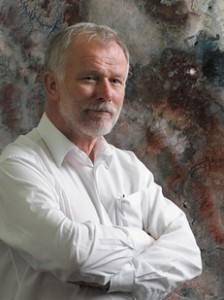February 19, 2012
 The modernization of isolated villages brings about a change in human information flow patterns that not only destroys the social fabric of the community, but also the economy and the landscape, according to Sander van der Leeuw, a Senior Sustainability Scientist at Arizona State University’s Global Institute of Sustainability.
The modernization of isolated villages brings about a change in human information flow patterns that not only destroys the social fabric of the community, but also the economy and the landscape, according to Sander van der Leeuw, a Senior Sustainability Scientist at Arizona State University’s Global Institute of Sustainability.
Van der Leeuw, an archaeologist and anthropologist specializing in the long-term impacts of human activity on the landscape, studied the consequences of the construction of roads after World War II in Epirus, a region dotted with rural villages that is shared by Greece and Albania. He looked at how information flow patterns were changed by the building of roads and how the mindset of the people in the villages was transformed as a consequence, leading to major transformations in the economy and the social life of the population.
“The roads brought the villages into the modern word, which is essentially a globalization process,” said van der Leeuw, who presented an anthropologist’s view on how globalization works at the local scale during a session at the annual meeting of the American Association for the Advancement of Science on Feb. 19.
“What happened is that initially, the information network in those very close-knit communities was centered on the village, leading to a very homogeneous ‘information pool.’ Once there were roads, little by little new connections were made between people in the villages and people in the nearby larger town. That changed ideas. Suddenly people saw an advantage of learning things in the town and bringing that back to the village,” van der Leeuw said.
“There was a long-term stable equilibrium in the villages. But once the roads were built each village was confronted by a choice: ‘Do I go the urban way or do I stay rural?’ and that had an impact on the choices people made in how the inhabitants managed the landscape.”
In one example, van der Leeuw pointed to a village that initially had a settlement on top of a hill and a settlement in the valley.
“Initially, people thought of themselves as living on top of the hill and going down in the winter to the valley. After a number of years, they thought of themselves as living in the valley and going up into the highlands. As a result, they weren’t so present on the highlands and their goats had less time to eat the young plants of trees and thorny bushes on that landscape, so that within a few years the vegetation changed and the flocks couldn’t get through the vegetation anymore because they would get stuck in the thorns with their wool. So the landscape closed,” van der Leeuw said.
“At the same time, out-migration of the younger generation left fewer people who were able to be shepherds, which also contributed to people focusing on the valley. They started changing the kinds of animals they were raising, replacing sheep and goats by pigs, because pigs don’t need to be herded.”
As a result, when asked whether the inhabitants were suffering from environmental degradation, they responded that, in effect, they did: trees were now growing on the hills, which had not happened since time immemorial, said van der Leeuw.
“What you see here is how tiny things, and in particular the opening up of a rural isolated community to the world’s system, completely changes the society, the subsistence, the vegetation, other aspects of the environment. You can see how a whole system completely shifts simply by tying it into the world system,” he said.
Van der Leeuw developed some of these ideas while directing a major research project for the European Union that studied sustainability from a complex adaptive systems perspective – the first of its kind. He is dean of ASU’s School of Sustainability and a professor in the School of Human Evolution and Social Change. He also is a co-director of Complex Adaptive Systems Initiative at ASU.
Carol Hughes, carol.hughes@asu.edu
480-965-6375

